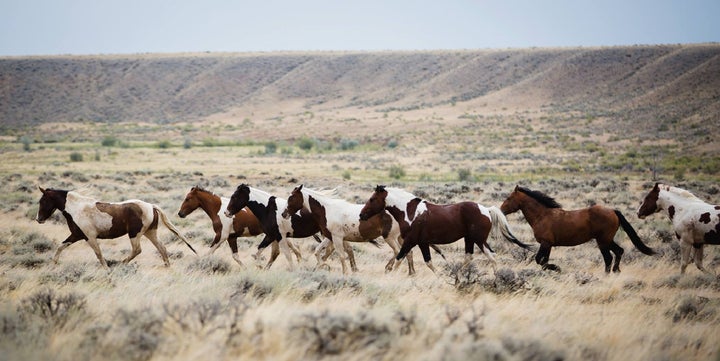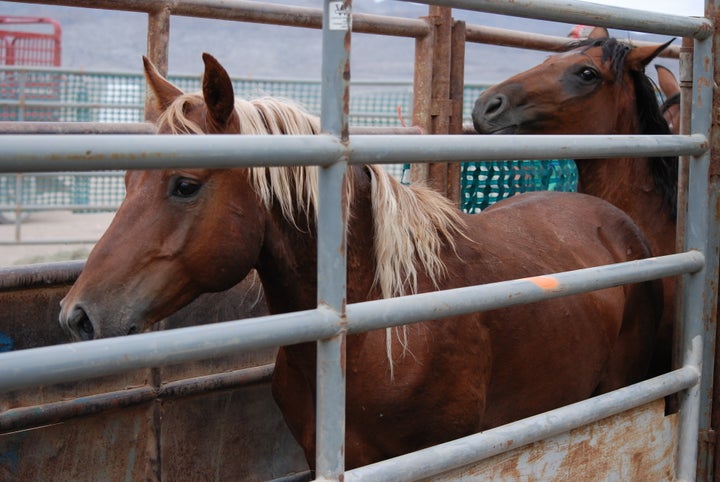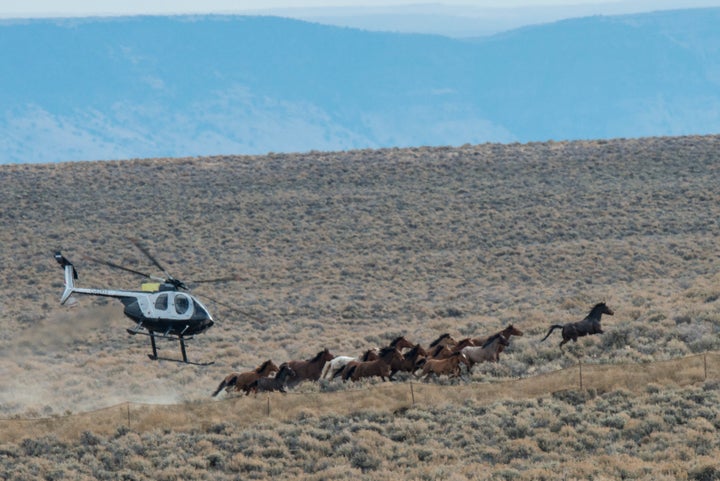
It’s a tough thing to do these days: Make national news by uttering something so outrageous and so stupid that it can’t be ignored.
Yet, despite plenty of competition from the current presidential race, a tiny federal committee this month managed to make headlines from coast to coast, and internationally.
How? By suggesting the U.S. government kill nearly 45,000 wild horses.
The funny thing is, members of the committee seemed surprised by the response. I’m not sure why. Americans love wild horses. Polls show 80 percent of Americans oppose horse slaughter, while three out of four of us want to see these iconic protected and preserved on federal land.
You would think members of the U.S. Bureau of Land Management’s Wild Horse and Burro Advisory Board would know this. But, with the notable and honorable exception of one member who voted against the idea, they floated their “final solution” without a clue as to how people would react.
The response was quick. Within minutes of the proposal going public, thousands of people signed online petitions against it and started writing angry letters to their decision-makers. The BLM, itself, immediately distanced itself from the suggestion, saying it would not take the board’s advice.

But this doesn’t mean it won’t all happen again.
Despite being well-loved, America’s wild horses are the target of a ceaseless misinformation campaign that puts them in constant danger. Which is odd, because in 1971 the U.S. Congress, with unanimous, bi-partisan support, passed the Wild Free-Roaming Horse and Burro Act to protect them.
Back then, Congress called wild horses “living symbols of the historic and pioneer spirit of the West” that were “fast disappearing from the American scene.” But today, the government treats these animals like pests.
While the majority of citizens still cherish America’s mustangs, they are viewed as a nuisance and competitor by a livestock industry that uses our federal land to graze cattle and sheep. The BLM is only too happy to do this industry’s bidding, even though the public land grazing program is heavily subsidized by U.S. taxpayers, yet provides less than three percent of America’s beef supply.
Each year, the BLM chases down wild horses with helicopters, rounds them up and removes them from the land. Some of these animals are adopted out, but most live out their days in government holding. These are the horses that most members of the BLM’s advisory board want to kill.

The roundups are predicated on a system called “Appropriate” Management Levels (AMLs), which the BLM uses to determine how many horses and other animals should inhabit the range. Yet, there’s nothing “appropriate” about them. The numbers are completely arbitrary and skewed in favor of cattle and sheep, not horses.
Since 1971, this has led BLM to remove hundreds of thousands of horses from the range while livestock continues to thrive. Over this same time period, the agency has eliminated horses and burros entirely from more than 20 million acres of originally designated habitat. In many of these areas, private livestock grazing continues where federally protected wild horses once roamed.
The National Academy of Sciences (NAS) in 2013 said it “could not identify a science-based rationale” from AMLs. Yet, it’s these numbers that drive BLM’s untenable management system, in which more and more horses are rounded up each year and more and more end up in holding.
The BLM currently spends 70 percent of its $80 million budget on roundups, removals and holding. And this amount grows annually because, as the NAS pointed out, removing horses from the range only encourages herds to breed more.
Yet, the roundup and removal system spirals on to the point where people throw up their hands and come up with crazy ideas, such as “let’s kill all the horses.”
Obviously, we need a complete re-do of our approach to managing wild horses. We need an approach that’s science-based, humane, fair and palatable to the public.
But getting to that point means getting through the smokescreen of misinformation. Advisory board members and the public must understand that AMLs and the claims of “overpopulation” are a sham. When discussing ecological impacts on the range, we must look at the impact of cattle and sheep, which far outnumber horses, on the land.
Solutions are available, but the BLM needs to use them. The agency should also follow the advice of the National Academy of Sciences and make greater use of fertility control vaccine (PZP) to stabilize horse populations humanely. Contrary to the BLM’s claims, the vaccine works… if you use it. What doesn’t work is the BLM’s expenditure of less than one percent of its budget to implement this scientifically proven and cost-effective solution.
Other solutions include reducing livestock grazing within designated horse habitats and compensating ranchers for non-use or reduced use of grazing permits. And we should repatriate horses now in costly short-term holding to habitats where wild horses have been zeroed out. In time, we could eliminate roundups and phase out holding facilities.
Rather than coming back with more ideas that are unworkable, inhumane and unacceptable, the BLM, its advisory board and Congress should take a lesson from this most recent backlash. Drop the misinformation campaign and employ humane management solutions that the public will support.
